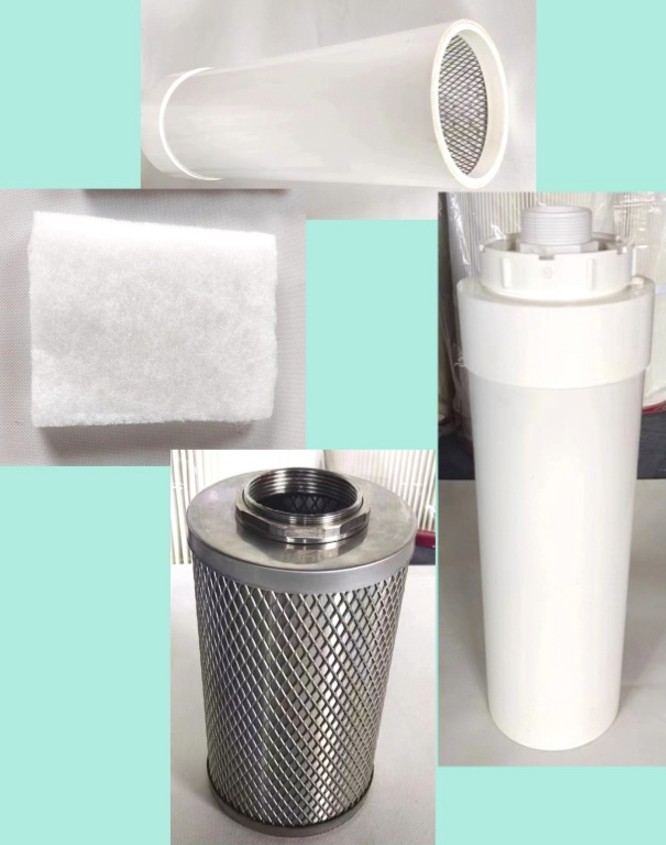NEWS & BLOGS

Hydraulic systems are one of the core power sources of modern industrial equipment. From excavators and forklifts to aircraft elevators and CNC machine tools in factories, hydraulic technology is everywhere. However, this powerful "heart" has a fatal weakness: pollution. That's right, even tiny particles, impurities, and even some invisible water can become an "invisible killer" in the operation of hydraulic systems.
Why is contamination the enemy of hydraulic systems?
You may think that the hydraulic oil tank is filled with clean and transparent oil, so where does the contamination come from? In fact, these sources of contamination are much more complicated than you think. On the one hand, they may come from the outside, such as dust and water vapor in the air entering the system through poor seals or when refueling; on the other hand, they may also come from the inside, such as small particles generated by friction between metal parts or debris from aging rubber seals.
These micron-sized objects may seem insignificant, but once they enter the hydraulic system, they are like sand entering a precision clock. They not only scratch the surface of the pump valve, but also easily block the throttle orifice, and even directly cause the components to get stuck. Data shows that more than 70% of hydraulic failures are related to oil contamination. Isn't it shocking?
How can the hydraulic system be "clean as new"?
At this point, you will definitely ask: "What should I do? Do I have to clean it every day?" Of course, it doesn't have to be so troublesome! We mainly rely on two magic weapons: prevention and filtration.
Let's talk about prevention first. It is very important to do a good job of sealing, such as replacing damaged sealing rings and using special tools to avoid secondary pollution when filling oil. In addition, you should also pay attention to environmental hygiene. If your equipment is in a dusty or humid place for a long time, it is always right to be extra careful.
Now let’s talk about filtration. This is the key line of defense that can really keep the “bad guys” out. Whether it is the inlet filter or the return oil filter, they are all designed to create a cleaner and more stable working environment for the hydraulic oil.

When choosing a filter, don't ignore these points! Did you know?
Choosing the wrong filter model or installing it in the wrong position will not only fail to provide protection but may also make the problem worse. Therefore, before choosing the right filter, you must understand the following factors:
1. Pressure level matching Different types of filters have different pressure ranges. For example, the high-pressure filter element used in the high-pressure main circuit must be able to withstand pressures of tens of megapascals (MPa), while the low-pressure circulation circuit generally only needs a few MPa. If you install it randomly, you know the consequences - frequent alarms at the least, and direct explosions at the worst.
2. The filter element precision is very particular. This part is a bit technical. Simply put, the higher the precision, the smaller the particles that can be captured. However, too high precision will increase resistance and affect pump efficiency. Therefore, it is recommended to choose according to the recommended value in the equipment manual. Generally, 5~20 microns (μm) is a more common range. If the other party does not clearly mark it, you can ask the brand after-sales service, they generally have experienced data support.
3. The flow rate needs to be met. Each type of filter element has its own maximum allowable flow rate. If this upper limit is exceeded, it is easy to cause the bypass valve to open and send the unfiltered oil directly into the main circuit, which is equivalent to installing it in vain. Therefore, you must confirm the actual flow rate of the equipment before purchasing it to avoid such a mistake.
4. Consider special working conditions. If your machine often works in harsh environments, such as mining, high-temperature casting, etc., you also need to choose materials with better corrosion resistance or high temperature resistance. After all, long-term exposure of ordinary materials to these conditions will shorten their service life~
Tips: How to judge whether it is time to change the filter element?
After using it for a few years and feeling that there is nothing unusual, can I continue to use the original filter? In fact, the inside has long been full of dirt or has lost its adsorption capacity. So how do you judge whether it is time to replace it? The following signals can help you:
• System pressure suddenly drops or the fluctuation amplitude increases;
• Hearing unusual noises during operation;
• Oil temperature rises and the heat dissipation effect becomes worse;
• The machine's operating efficiency begins to decline.
In summary, let your "favorite machine" run fast and steady. Having talked about this, I believe everyone has deeply realized the importance of hydraulic system pollution control. From understanding the source of pollution to doing a good job of sealing prevention, to correctly selecting filters with appropriate specifications and materials, each step is crucial. If you pay a little attention to these "small details" in your daily life, you can effectively reduce the failure rate and greatly extend the life of the equipment.
If you think this article is helpful to you, please share it with more people in need!
What Can We Do For You
